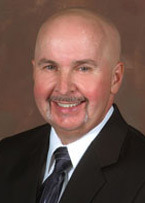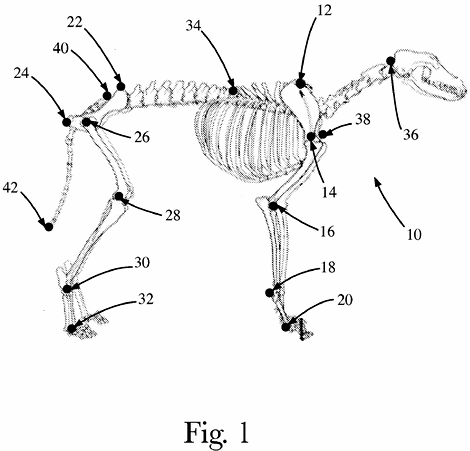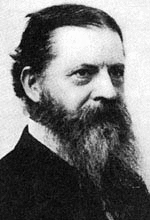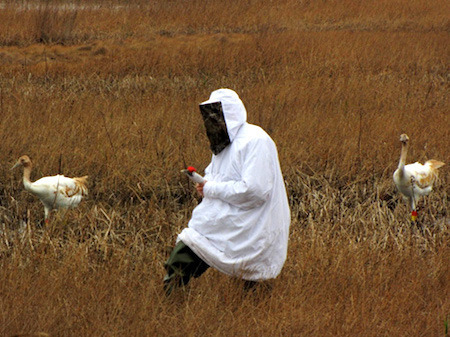Marc Abrahams's Blog, page 443
December 2, 2013
Seamen Semen Channeling in the Indian Navy
One Indian naval officer was especially proactive about disease prevention a decade ago. He presented a talk about it:
“STD/HIV intervention in an Indian naval ship – an experience,” S. Mukhopadhyay, paper presented at the XV International AIDS Conference, 2004: Abstract no. C10057″. (Thanks to investigator Edward Allison for bringing this to our attention.) The author, at SORD (Social Organization for Research & Development), Calcutta, explained:
This is an abstract written on experiences of the author during his services in Indian Navy as Medical Officer. This particular STD/HIV intervention was organized by author in a ship of Indian Navy among 350 naval personnel on board between Nov’92 to Aug’95…. Strategies of Intervention:
Following need based strategies were adopted by me & my medical team,
1) Repeated lectures health related and moral to modify sexual behaviour….
5) Encouraging masturbation habit among serving sailors.

How to remove an eraser from an ear
In this video, Professor Larry B. Mellick, MD, of Georgia Regents University, explains and demonstrates how to remove an eraser from a person’s ear:
 Professor Mellick’s biography remarks of him:
Professor Mellick’s biography remarks of him:
“His current academic ranks include being Professor of emergency medicine and pediatrics. His medical training was accomplished in the United States Army where he attained a rank of Lieutenant Colonel before being honorably discharged.”
Professor Mellick [pictured here] also produced a video about the medical indication called ‘the Terry Thomas sign”. Text accompanying the video gives basic background info:
“The late English comedian, Terry Thomas, had a large gap between his front teeth that actually turned out to be a trademark of sorts for him. The gap between the scaphoid bone and lunate bone that occurs when there is a traumatic ligamentous disruption has been named after Mr. Thomas in recognition of this large gap between his front teeth.”
Erasers can, almost often, be found in ears. A 1987 medical study makes that point:
“Foreign bodies of the ears and nose in childhood,” M. Douglas Baker, Pediatric Emergency Care, vol. 3, n. 2, June 1987, pp. 67-70. The author explains:
“The items most commonly removed from children’s external auditory canals were roaches, paper wads, toy parts, earring parts, hair beads, eraser tips, and food. Foreign bodies most often found in the nose included hair beads, toy parts, paper wads, and food.”
The study then makes a generalization [but does so in a way that may be confusing to persons not experienced at reading medical literature — we have used bold lettering to highlight the abstruse passage]:
“Approximately 90% of all foreign bodies were able to be removed without significant complications by emergency department personnel with simple equipment. Those who required referral for otorhinolaryngologic intervention had more often failed at self or parental home foreign body removal attempts than those who were able to managed successfully by emergency department personnel.”

Swallows and Bed-Bugs
One hundred years ago, an ornithologist confessed that one, at least, of his beliefs had been shaken. He published a paper about it:
“Swallows and Bed-Bugs,” Edward R. Warren, The Condor, 1913, Vol.15(1), pp.14-16.
IN MY paper in the May-June CONDOR, 1912, entitled “Some North-central Colorado Bird Notes,” I referred to the belief that swallows harbor bed-bugs as ridiculous; and now I have to confess that possibly I did not know as much as I thought I did, a not uncommon failing with us all. Some time after the paper was published, W. Leon Dawson in a very courteous letter, called my attention to the fact that he had found Cliff Swallows‘ nests badly infested with bed-bugs, in one case so much so that the colony had been deserted. He reported this in “The Birds of Washington,” page 333. This started me to looking into the matter, something I had not done before, and as it would seem that not very many are posted on the subject, and in fact but little definite has been published that I have been able to find, I have thought it worth while to write up what little I have been able to learn about the matter, together with a few observations of my own, in the hope that it may be the means of bringing out further information.
I found that a bug (Acanthia hirundinis), belonging to the same genus as the true bed-bug (Acanthia lectularia), is parasitic on swallows, pigeons, chickens, and bats. It should perhaps be stated that the French authority, L. Gedoelst, places it in another genus because of certain structural differences, calling it Oeciacus hirundinis….

Civil Inattention – it exists (in elevators and elsewhere)
The clip shows Peter Sellers and fellow actors attempting (and failing) to portray an extreme example of ‘Civil Inattention’ (C.I.) in an elevator [a 'lift' UK]. C.I. was first formally described by the late professor Erving Goffman in ‘Behavior in Public Places: Notes on the Social Organization of Gatherings‘ (The Free Press, New York, 1963.) and can be summed up as:
“A behavioral ritual enacted when two or more persons are mutually present but not involved in any form of interaction.”
Think: Hiding behind newspapers on public transport, or avoiding eye-contact in elevators. Twenty years after the phrase had been coined, its existence was experimentally confirmed by Professor Miron Zuckerman (University of Rochester) Professor Marianne Miserandino (now at Arcadia University) and Professor Frank Bernieri (now at Oregon State University) in their paper : ‘Civil Inattention Exists – in Elevators’ (Pers Soc Psychol Bull, December 1983, vol. 9 no. 4 pp. 578-586)
“The visual behavior of 320 elevator riders was observed by two experimenters, one male and one female.
[...]
Only single elevator riders were observed.
[...]
Only looks that were oriented towards the experimenters’ face or upper body were recoded: looks that were oriented towards the experimenters’ feet did not count.”
The experimental observers (or confederates) were armed with stopwatches (silent ones) so that they could log the duration-times of gazing (or not gazing).
“It was found that about half of all riders gave the confederate a brief visual notice at the beginning of the ride and then refrained from further eye contact. Of the riders, 35% added one or two glances to the initial look; perhaps these riders wanted to renew their acknowledgment of the confederates or perhaps they simply displayed more interest in their fellow passengers.”
Subsequent experimental studies have show that Civil Inattention not only exists in elevators, but also :
Also see;

December 1, 2013
Evaluation: How to load quad and vertical dispensers
Investigator Phyllis Stanley writes: “After reviewing every available training video, twice, I recommend this above all other sets of English-language instructions for how to load quad and vertical toilet paper dispensers”:
UPDATE: Stanley writes: “Here is the best of the Spanish-language videos on the subject. The sub-optimal sound quality and excessive length are, in my view and those of my colleagues, cause for some concern. We worry that these imperfections might lead to inconsistencies across different facilities in the loading of quad and vertical toilet paper dispensers”:
BONUS (unrelated, in Chinese): How to install a blind rivet nut:

Crane Dances as Play Behavior
Question: Which of the three individuals in this photo is officially listed as an author of the study ”Crane Dances as Play Behavior,” [Ibis, vol. 155, 2013, pp. 424-425]?
ANSWER: Vladimir Dinets, the one in the middle.
BONUS: His new understanding of crocodiles and alligators.

November 30, 2013
Somewhat baffling companion-animal patent apps
 These two graphics are from a patent application we find mildly baffling. Titled “METHOD FOR DETERMINING THE BIOLOGICAL AGE OF A COMPANION ANIMAL,” US patent application #12/395,924 was filed on March 2, 2009 to inventors Allan John Lepine [pictured here], Dennis Richard Ditmer, Lori Lee Halsey and John Russell Burr. The description is brief (the body of the patent adds considerable detail, if not enlightenment):
These two graphics are from a patent application we find mildly baffling. Titled “METHOD FOR DETERMINING THE BIOLOGICAL AGE OF A COMPANION ANIMAL,” US patent application #12/395,924 was filed on March 2, 2009 to inventors Allan John Lepine [pictured here], Dennis Richard Ditmer, Lori Lee Halsey and John Russell Burr. The description is brief (the body of the patent adds considerable detail, if not enlightenment):
A method for determining the biological age of the companion animal. A companion animal ambulates from a first region to a second region of a pressure detection unit and the footfall data is utilized in the determination of the biological age of the companion animal.


The same inventors filed another patent that same day. Application #12/395,935 is titled “MANAGEMENT PROGRAM FOR THE BENEFIT OF A COMPANION ANIMAL.”
Both documents say the inventors can be reached via the Procter & Gamble Company in Ohio, who presumably are less baffled by these patent applications than we are.

November 29, 2013
McClain-Furmanski moves his hair, again
Dennis McClain-Furmanski, a longtime member of the Luxuriant Flowing Hair Club for Scientists, informs us that he and his hair have again moved to a new location. Two locations, actually.
Dennis McClain-Furmanski, Ph.D., LFHCfS
Psychology
Emory & Henry College, and University of Virginia at Wise
USA


Breaking news: Ig Nobel Prize winner Gideon ($100,000,000,000,000 bill) Gono resigns
 Reports from Zimbabwe say that Gideon Gono is leaving his position as governor of Zimbabwe’s Reserve Bank. Dr. Gono was awarded the 2009 Ig Nobel Prize for mathematics, for giving people a simple, everyday way to cope with a wide range of numbers — from very small to very big — by having his bank print bank notes with denominations ranging from one cent ($.01) to one hundred trillion dollars ($100,000,000,000,000).
Reports from Zimbabwe say that Gideon Gono is leaving his position as governor of Zimbabwe’s Reserve Bank. Dr. Gono was awarded the 2009 Ig Nobel Prize for mathematics, for giving people a simple, everyday way to cope with a wide range of numbers — from very small to very big — by having his bank print bank notes with denominations ranging from one cent ($.01) to one hundred trillion dollars ($100,000,000,000,000).
REFERENCE: Zimbabwe’s Casino Economy — Extraordinary Measures for Extraordinary Challenges, Gideon Gono, ZPH Publishers, Harare, 2008.
Dr. Gono is responsible for creating the ten trillion dollar bills that were given as prize money to this year’s (2013) Ig Nobel Prize winners.

BONUS: “Gono says goodbye to RBZ staff”
His resignation statement includes this passage:
“I leave my office a happy man given that only on Tuesday, Cabinet agreed, finally to the Government take-over of all Bank debts incurred by the Central Bank on behalf of the State. Some of these debts were incurred as way back as during our pre-independence era right through the 1980s, 1990s and the 2000s. An erroneous impression had been created in the market to the effect that the entire US$1.3 billion was created during my era of administration. Of course nothing could be further from the truth.”
BONUS: The 100-trillion-dollar book
BONUS from back in 2009: An admirer admires Dr. Gono’s accomplishments:

Magazine: the special Tolstoys & Rifles issue
 The special Tolstoys & Rifles issue (vol. 19, no. 5) of the magazine (the Annals of Improbable Research) is now out!
The special Tolstoys & Rifles issue (vol. 19, no. 5) of the magazine (the Annals of Improbable Research) is now out!
Articles include “A Theory of Absolutely Everything” [co-written by seven Dr. Tolstoys], “Icky Cutesy Research Review“, and more, more, more, including new helpings of “Improbable Research Review”, “Boys Will Be Boys”, “Soft Is Hard”, and other outstandingly improbable research snippets from many fields and countries.
Mel (right) says it’s swell.
Click on the Mel’s face to see the table of contents, buy the e-book version (first download a free preview of it, if you like!), or subscribe to the paper version.

Marc Abrahams's Blog
- Marc Abrahams's profile
- 14 followers






